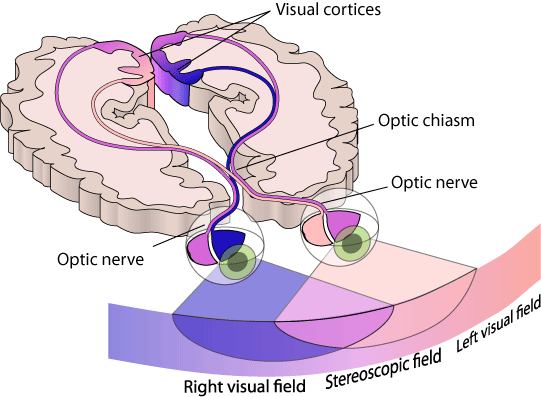Eye and visual pathways
The visual system is the section of the central nervous system that enables organisms to process the visual detail, and also enabling numerous non-image forming photoresponse functions. It interprets the information from visible light to construct a representation of the surrounding world. The visual system completes a number of complex tasks, involving the reception of light and the formation of monocular representations; the assembling of a binocular perception from a pair of two dimensional projections; the recognition and categorization of visual objects; assessing the distances to and between objects; and guiding body movements in relation to the visual objects. The psychological manifestation of visual information is termed as the visual perception, a lack of which is known as the blindness. The Non-image forming visual functions, independent of visual perception, involving the pupillary light reflex (PLR) and circadian photoentrainment.
